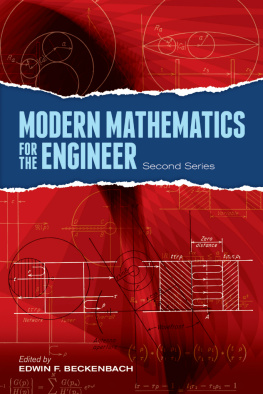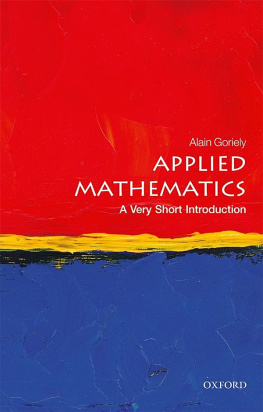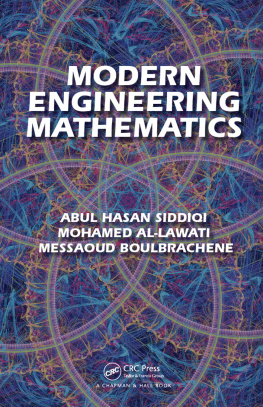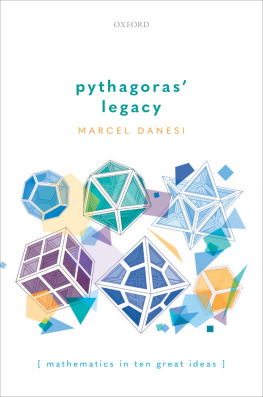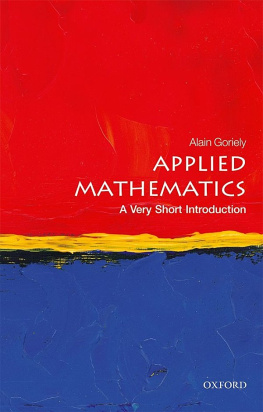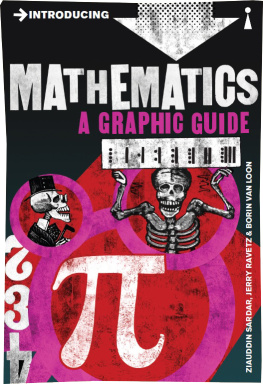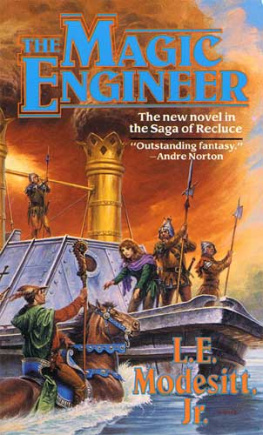Beckenbach - Modern mathematics for the engineer. Second series
Here you can read online Beckenbach - Modern mathematics for the engineer. Second series full text of the book (entire story) in english for free. Download pdf and epub, get meaning, cover and reviews about this ebook. year: 2013, publisher: Dover Publications, genre: Home and family. Description of the work, (preface) as well as reviews are available. Best literature library LitArk.com created for fans of good reading and offers a wide selection of genres:
Romance novel
Science fiction
Adventure
Detective
Science
History
Home and family
Prose
Art
Politics
Computer
Non-fiction
Religion
Business
Children
Humor
Choose a favorite category and find really read worthwhile books. Enjoy immersion in the world of imagination, feel the emotions of the characters or learn something new for yourself, make an fascinating discovery.
- Book:Modern mathematics for the engineer. Second series
- Author:
- Publisher:Dover Publications
- Genre:
- Year:2013
- Rating:5 / 5
- Favourites:Add to favourites
- Your mark:
- 100
- 1
- 2
- 3
- 4
- 5
Modern mathematics for the engineer. Second series: summary, description and annotation
We offer to read an annotation, description, summary or preface (depends on what the author of the book "Modern mathematics for the engineer. Second series" wrote himself). If you haven't found the necessary information about the book — write in the comments, we will try to find it.
Beckenbach: author's other books
Who wrote Modern mathematics for the engineer. Second series? Find out the surname, the name of the author of the book and a list of all author's works by series.
Modern mathematics for the engineer. Second series — read online for free the complete book (whole text) full work
Below is the text of the book, divided by pages. System saving the place of the last page read, allows you to conveniently read the book "Modern mathematics for the engineer. Second series" online for free, without having to search again every time where you left off. Put a bookmark, and you can go to the page where you finished reading at any time.
Font size:
Interval:
Bookmark:
MODERN MATHEMATICS FOR THE ENGINEER Second Series
MODERN MATHEMATICS FOR THE ENGINEER Second Series
Edited by
EDWIN F. BECKENBACH
With an Introduction by
MAGNUS R. HESTENES
Dover Publications, Inc., Mineola, New York
Bibliographical Note
Modern Mathematics for the Engineer: Second Series, first published by Dover Publications, Inc., in 2013, is an unabridged republication of the work originally published by McGraw-Hill Book Company, New York, in 1961.
International Standard Book Number
ISBN-13: 978-0-486-49747-1
ISBN-10: 0-486-49747-X
Manufactured in the United States by Courier Corporation
49747X01
www.doverpublications.com
The Authors
Arthur Erdlyi, Dr. Ver. Nat., D.Sc., Professor of Mathematics, California Institute of Technology
Bernard Friedman, Ph.D., Professor of Mathematics, University of California, Berkeley
John W. Miles, Ph.D., Professor of Engineering and Geophysics, University of California, Los Angeles
Ralph S. Phillips, Ph.D., Professor of Mathematics, Stanford University
J. Barkley Rosser, Ph.D., Professor of Mathematics, Cornell University
William Feller, Ph.D., Eugene Higgins Professor of Mathematics, Princeton University
David Blackwell, Ph.D., Professor of Statistics, University of California, Berkeley
Richard Bellman, Ph.D., Research Mathematician, The RAND Corporation
George B. Dantzig, Ph.D., Research Mathematician, The RAND Corporation
Samuel Karlin, Ph.D., Professor of Mathematics and Statistics, Stanford University
Stanislaw M. Ulam, Ph.D., Research Advisor, Los Alamos Scientific Laboratory
Raymond Redheffer, Ph.D., Professor of Mathematics, University of California, Los Angeles
Subrahmanyan Chandrasekhar, Ph.D., Sc.D., Morton D. Hull Distinguished Service Professor in the Departments of Physics and Astronomy, University of Chicago
Paul R. Garabedian, Ph.D., Professor of Mathematics, New York University
David Young, Ph.D., Professor of Mathematics and Director of the Computation Center, University of Texas
George Plya, Ph.D., Emeritus Professor of Mathematics, Stanford University
Foreword to the 1961 Edition
The physical and economic world in which the modern engineer operates continues to grow more complex, putting ever greater demands on the mathematical models representing that world. During the five years since University Extension last offered a lecture series in Modern Mathematics for the Engineer, reliance on a variety of these models has grown in an amazing fashion, due in no small measure to the adaptation of advanced mathematical techniques for use in connection with high-speed computing machines. Hilbert-space methods, always meaningful to the mathematicians who developed them, have now become useful also to the engineer and applied scientist, and the acceptance of probabilistic as well as deterministic analyses has become commonplace.
The present series was conceived with the objective of presenting some exciting aspects of modern mathematics. The course was designed for nonspecialists with training in engineering or science, high-school and college teachers of mathematics, and others desiring to remain au courant concerning mathematical developments. The material is intended to be quite understandable in the large, although not necessarily in complete detail, on the basis of the single lectures, and all of it should be applicable either now or in the reasonably near future to science and engineering.
We are pleased to share the stimulating experience of the second Modern Mathematics for the Engineer lecture series with you, the reader, through the pages of this book.
PAUL H. SHEATS
Professor of Education
Dean, University Extension
University of California
L. M. K. BOELTER
Professor of Engineering
Dean, College of Engineering
University of California
Los Angeles
MORROUGH P. OBRIEN
Professor of Engineering
Dean, College of Engineering
University of California
Berkeley
Preface to the 1961 Edition
For several years the University of California, through University Extension, has been conducting a highly successful series of lecture courses devoted to Modern Science for the Engineer. The lectures are available in book form in the University of California Engineering Extension Series, of which six volumes (see page ii) have preceded the present contribution.
The timeliness of the seriesor perhaps the scientific alertness of the Eastern European countriesis attested to by the fact that, during its first three years of existence, the initial volume of Modern Mathematics for the Engineer was translated into Hungarian, Polish, and Russian.
Turning a second time to mathematics, University Extension appointed an Advisory Committee composed of individuals representing various universities and industrial organizations in California to plan the 195859 lecture series.
The Committee adopted as its objective the presentation of some exciting aspects of modern mathematics that either are presently applicable or promise soon to be applicable to science and engineering.
To achieve this objective, the Committee sought to obtain the services of a group of outstanding speakers who were experts on advanced applicable mathematics. The topics chosen were, for the most part, those that have had recent spectacular applications in mathematics, that have been applied or are likely soon to be applied in physical, sociological, and biological sciences, and that involve a degree of mathematical subtlety.
The high success of the course was ensured by the enthusiastic response of the distinguished group of lecturers who participated in the series. It was presented at five locations throughout the state: at Berkeley, Corona, Los Angeles, Palo Alto, and San Diego.
The volume that has resulted is intended for engineers, scientists, mathematicians, students, high-school and college teachers, and others who desire to become or remain informed concerning current applicable mathematical developments.
The first volume of Modern Mathematics for the Engineer was somewhat arbitrarily divided into three parts: Mathematical Models, Probabilistic Problems, and Computational Considerations. The present volume is similarly divided into three parts: Mathematical Methods, Statistical and Scheduling Studies, and Physical Phenomena.
Certainly the foregoing partitioning is not a sharp one; rather, it is one of emphasis. Thus the broad and deep mathematical methods developed in .
is concerned with physical observations, but these observations lead to general conjecturesand the conjectures demand proof, which in turn involves ingenious and penetrating mathematical methods.
There are numerous examples and exercises throughout the book. Some of the exercises are at the ends of chapters, others are interspersed with the text, and still others are incorporated in the text. It is hoped that they will aid the reader in his over-all assimilation of the material and that they will add to the usefulness of the book.
The editor is most grateful to the authors for their excellent and prompt contributions to this volume; to the other Advisory Committee members, John L. Barnes, Clifford Bell, L. M. K. Boelter, George W. Brown, John C. Dillon, Gerald Estrin, James C. Fletcher, Bernard Friedman, Magnus R. Hestenes, John W. Miles, Russell R. ONeill, Louis A. Pipes, C. T. Singleton, Ivan S. Sokolnikoff, Thomas H. Southard, Angus E. Taylor, Charles B. Tompkins, and John D. Williams for their efforts and excellent ideas; to the Course Coordinators, John C. Bowman, Bernard Friedman, Stanley B. Schock, and Victor Twersky for their smooth handling of lecture arrangements; once again to Clifford Bell, the Statewide Coordinator of the course, for his unobtrusive but highly valued leadership; and especially the editor thanks his secretaries, Mildred Webb and Patti Hansen, for their careful and efficient work.
Next pageFont size:
Interval:
Bookmark:
Similar books «Modern mathematics for the engineer. Second series»
Look at similar books to Modern mathematics for the engineer. Second series. We have selected literature similar in name and meaning in the hope of providing readers with more options to find new, interesting, not yet read works.
Discussion, reviews of the book Modern mathematics for the engineer. Second series and just readers' own opinions. Leave your comments, write what you think about the work, its meaning or the main characters. Specify what exactly you liked and what you didn't like, and why you think so.

